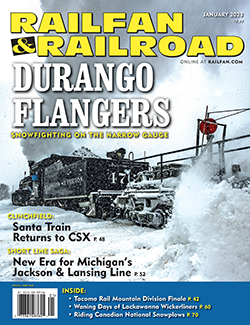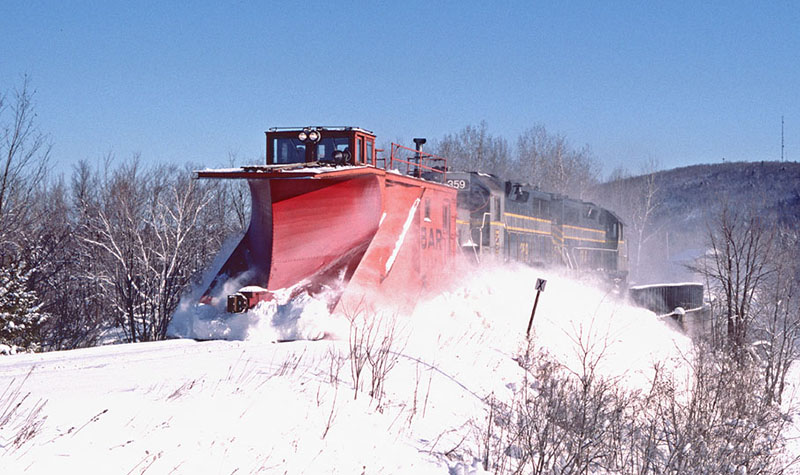 A railroad in the snow is a beautiful thing. I’ve ridden many trains through winter landscapes, and it always feels comforting. The outside is cold, but the interior of a coach or sleeping car is warm, and more importantly, in motion. When it’s a full-on blizzard, even the most beautiful landscape is a place you are grateful to be both protected from and moving through.
A railroad in the snow is a beautiful thing. I’ve ridden many trains through winter landscapes, and it always feels comforting. The outside is cold, but the interior of a coach or sleeping car is warm, and more importantly, in motion. When it’s a full-on blizzard, even the most beautiful landscape is a place you are grateful to be both protected from and moving through.
From trackside, the appeal may be somewhat different. The still moments after snowfall has stopped can be enchanting. Whether it is a modern intermodal freight train on the busiest main line or a humble switcher rocking slowly down a branch line, to see trains pass in the snow is to step into a postcard image. No matter how beaten, brutal, or nasty the equipment, it turns picturesque under a dusting of snow.
Why is this? Perhaps it has something to do with childhood. Where I grew up, snow was infrequent in the winters, and when it did arrive, everything shut down — highways, stores, and (perhaps most importantly) schools. “Snow day” meant a day off, but also a day off that was spent outside, maybe with a snowball fight, maybe with building snowmen, or maybe just looking at it all. I suspect that anytime I see a train in the snow, I feel for a moment that thrill of pleasant nostalgia.
But what is snow to the railroad? Something far less quaint, I assure you. From almost the beginning of railroading in North America, snow has been a hindrance, slowing or even stopping the progress of trains. Worse, if the temperature was inconsistent, snow could go through cycles of thawing and freezing, becoming hard-packed ice jamming switches, reducing locomotive traction, and playing havoc with signal circuits.
Unsurprisingly, then, railroads began developing snow-fighting equipment quite early. The first snowplows date to the 1840s and were made of wood, looking something like an upside-down prow of a fast sailing ship, and most likely borrowing the same design used by farmers to till hard soil. If pushed fast enough by a locomotive, these plows were capable of clearing away snow from tracks in most places. The “flanger” is a variation on the plow, using two movable blades of metal that extend out from a car pulled behind a locomotive, rather than pushed in front. This month you’ll see how Colorado’s narrow gauge Durango & Silverton still uses flangers to keep its line clear of snow.
Even these devices were not always enough. Starting in the 1880s, Canadian railways running through the mountains deployed rotary snowplows (something like a blender put on its side and pushed ahead into the snow and ice). These were steam-powered snow-eating machines, chewing up the snowbanks before them and spitting them out as a spray of white jetting out the top and side of the machine, arcing through the air and away from the tracks.
Snow-fighting operations are magnetic to railfans. While the snow itself may create a picturesque scene, the snowplows and flangers and rotaries add high drama. They are both terrifying and mesmerizing to watch at work. They appeal considerably less to crews, for snow-fighting equipment has a long history of jamming and even derailing. For the railroads, they are merely another expense to get the system back to baseline operation. Yet like so many expenses — old equipment, marginal lines, manned helpers, quaint depots — they are endlessly appealing to those of us who see the railroad from the outside.
—Alexander Benjamin Craghead is a transportation historian, photographer, artist, and author.



